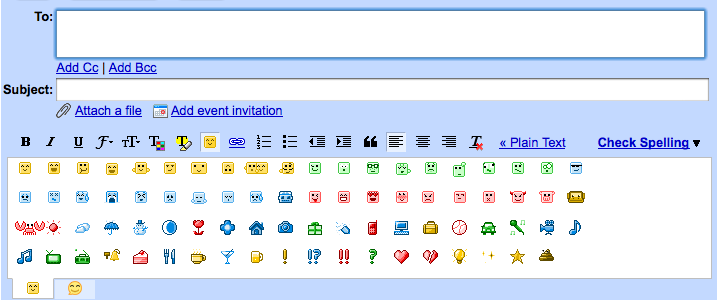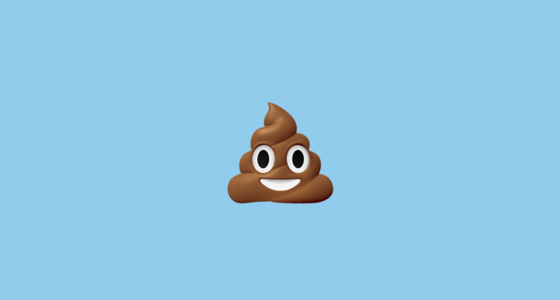Latest news about Bitcoin and all cryptocurrencies. Your daily crypto news habit.
10th anniversary of the 💩 poop emoji
Today, it’s one of the most popular emojis but almost didn’t make the cut. And recently, even the United Nations has used it in a digital campaign!
In October this year, the poop 💩 emoji will celebrate it’s 10th anniversary.
Although used in Japan before, the original form of the poop emoji was first launched internationally by Google in 2008 as an emoticon for Gmail, and later approved as part of Unicode 6.0 in 2010. Although it was originally shown as a more literal pile of poo, with flies circling above it, on Android 5.0, it later evolved into what today is one of the most popular and recognizable emojis.
Emojipedia describes it as “a pile of poo that is shaped like a soft-serve ice cream; brown in color with a friendly smile in most versions of this emoji.”
The emoji is inspired by Dr. Slump, a Japanese animation character from the 80s.
“However, it wasn’t always so welcomed amongst emoji-fans,” writes Amanda Vanschaick in a 2017 blog post mentioning that “people were not impressed.”
“Gmail held the strongest path of resistance against the emoji, stating that they felt people would be offended by the vulgarity of the emoji,” she says. “It took the persuasion of the creators of the emoji, Darick Tong, Darren Lewis, Takeshi Kishimoto, and Katsuhiko “Kat” Momoi, to get the poo-moji on to Gmail.”
At the time, the creators were all from Google. Tong and Lewis were Google software engineers — Tong led Google’s emoji project; Kishimoto was Google’s Japanese product manager; and Momoi was Google test engineer and internationalization expert.
Why Google? While the emoji project began in Japan in 1999 when Japan’s three major telecom carriers — KDDI AU, SoftBank, and NTT-DoCoMo — created their first series of small rudimentary graphics for text messages and emails, it wasn’t until 2007 until 2007, when Google partnered with KDDI AU to adopt emojis for Gmail, that the emoji code was fixed to make it simple for everybody to use them. And with Google on board emojis became international.
In 2014, Fast Company quoted Tong about the beginning of the emoji project: “The internal project name was Mojo,” they write. “The motivation was to expand Google’s presence in Japan and Asia. The one thing that was missing from the Gmail experience was a good handling of emoji, which is very engrained in the culture of Japan.
The article described the history of the emoji as “an international tale of drama, cultural differences, and near-disasters.”
The team of creators thought that the poop emoji “was absolutely one of the necessary emoji” to have in the first release for Gmail, but many at Google headquarters in California felt it was too offensive and some even were against even implementing emojis for Gmail as they would ruin the user experience.
“We pushed hard for the poop emoji,” Lewis told Fast Company.
It passed and in 2008, Google posted about emojis in a blog post aptly titled: “A picture is worth a thousand words.” The poop emoji was included.
“The black and white days of text-based emails have had their day,” the post reads. “Following the evolutionary path blazed by colored labels, we present, in all their technicolor glory, emoticons in your mail.”
A month later, Apple began to embrace the idea and finally two years later, in 2010, emoji was officially approved by the Unicode Consortium, which meant that it was accepted industry-wide as a real language.
The Unicode Consortium is a non-profit corporation devoted to developing, maintaining, and promoting software internationalization standards and data, particularly the Unicode Standard, which specifies the representation of text in all modern software products and standards. It actively develops standards in the area of internationalization including defining the behavior and relationships between Unicode characters.
Today, emojis are part of pop culture and used as part of our language. But “it’s easy to dismiss emoji,” wrote Adam Sternbergh in a New York Magazine article in 2014. “They are, at first glance, ridiculous.”
And the poop emoji maybe even more ridiculous than others.
Sternbergh described emojis as “a small invasive cartoon army of faces and vehicles and flags and food and symbols trying to topple the millennia-long reign of words.”
And yet, emojis have become a daily occurrence for many of us. Consider for instance the use of reaction emojis on Facebook — even on 360 videos within the Gear VR’s video app — and how they have transformed the way we interact with posts, beyond the simple thumbs up emoji.
In 2015, for the first time ever, the Oxford Dictionaries Word of the Year was an emoji:
Officially called the Face with Tears of Joy emoji, 😂 “was chosen as the ‘word’ that best reflected the ethos, mood, and preoccupations of 2015.” The emoji won over other shortlisted words like ‘sharing economy’, ‘dark web’, ‘ad blocker’, and even ‘refugee’ and Brexit’.
According to emojitracker, an experiment in real-time visualization of all emoji symbols used on Twitter started in 2013 by Matthew Rothenberg, an independent artist and hacker from Brooklyn, NY, the poop emoji is the 116th most used emoji on Twitter.
I analyzed the use of emojis in politics and diplomacy in a 2017 blog post here on Medium.
The poop emoji was also cited in my post, together with the toilet 🚽 emoji. Both were featured quite successfully in the November 2016 #WorldToiletDay campaign by the World Health Organization (WHO) of the United Nations.
body[data-twttr-rendered="true"] {background-color: transparent;}.twitter-tweet {margin: auto !important;}
Over 1 billion people 💩 in the open due to lack of proper 🚽 facilities https://t.co/9U0vUVPOiP #WorldToiletDay
— @WHO
function notifyResize(height) {height = height ? height : document.documentElement.offsetHeight; var resized = false; if (window.donkey && donkey.resize) {donkey.resize(height); resized = true;}if (parent && parent._resizeIframe) {var obj = {iframe: window.frameElement, height: height}; parent._resizeIframe(obj); resized = true;}if (window.location && window.location.hash === "#amp=1" && window.parent && window.parent.postMessage) {window.parent.postMessage({sentinel: "amp", type: "embed-size", height: height}, "*");}if (window.webkit && window.webkit.messageHandlers && window.webkit.messageHandlers.resize) {window.webkit.messageHandlers.resize.postMessage(height); resized = true;}return resized;}twttr.events.bind('rendered', function (event) {notifyResize();}); twttr.events.bind('resize', function (event) {notifyResize();});if (parent && parent._resizeIframe) {var maxWidth = parseInt(window.frameElement.getAttribute("width")); if ( 500 < maxWidth) {window.frameElement.setAttribute("width", "500");}}body[data-twttr-rendered="true"] {background-color: transparent;}.twitter-tweet {margin: auto !important;}
Women and girls are at risk of rape and assault simply because they have to 💩 in the open #WorldToiletDay
— @WHO
function notifyResize(height) {height = height ? height : document.documentElement.offsetHeight; var resized = false; if (window.donkey && donkey.resize) {donkey.resize(height); resized = true;}if (parent && parent._resizeIframe) {var obj = {iframe: window.frameElement, height: height}; parent._resizeIframe(obj); resized = true;}if (window.location && window.location.hash === "#amp=1" && window.parent && window.parent.postMessage) {window.parent.postMessage({sentinel: "amp", type: "embed-size", height: height}, "*");}if (window.webkit && window.webkit.messageHandlers && window.webkit.messageHandlers.resize) {window.webkit.messageHandlers.resize.postMessage(height); resized = true;}return resized;}twttr.events.bind('rendered', function (event) {notifyResize();}); twttr.events.bind('resize', function (event) {notifyResize();});if (parent && parent._resizeIframe) {var maxWidth = parseInt(window.frameElement.getAttribute("width")); if ( 500 < maxWidth) {window.frameElement.setAttribute("width", "500");}}body[data-twttr-rendered="true"] {background-color: transparent;}.twitter-tweet {margin: auto !important;}
An estimated 1.9 billion people rely on drinking-water that is contaminated by 💩 https://t.co/bBh1GPnc8J #WorldToiletDay
— @WHO
function notifyResize(height) {height = height ? height : document.documentElement.offsetHeight; var resized = false; if (window.donkey && donkey.resize) {donkey.resize(height); resized = true;}if (parent && parent._resizeIframe) {var obj = {iframe: window.frameElement, height: height}; parent._resizeIframe(obj); resized = true;}if (window.location && window.location.hash === "#amp=1" && window.parent && window.parent.postMessage) {window.parent.postMessage({sentinel: "amp", type: "embed-size", height: height}, "*");}if (window.webkit && window.webkit.messageHandlers && window.webkit.messageHandlers.resize) {window.webkit.messageHandlers.resize.postMessage(height); resized = true;}return resized;}twttr.events.bind('rendered', function (event) {notifyResize();}); twttr.events.bind('resize', function (event) {notifyResize();});if (parent && parent._resizeIframe) {var maxWidth = parseInt(window.frameElement.getAttribute("width")); if ( 500 < maxWidth) {window.frameElement.setAttribute("width", "500");}}body[data-twttr-rendered="true"] {background-color: transparent;}.twitter-tweet {margin: auto !important;}
Globally, diseases caused by exposure to our 💩 are making us sick: diarrhoea, cholera, dysentery, polio & more #WorldToiletDay
— @WHO
function notifyResize(height) {height = height ? height : document.documentElement.offsetHeight; var resized = false; if (window.donkey && donkey.resize) {donkey.resize(height); resized = true;}if (parent && parent._resizeIframe) {var obj = {iframe: window.frameElement, height: height}; parent._resizeIframe(obj); resized = true;}if (window.location && window.location.hash === "#amp=1" && window.parent && window.parent.postMessage) {window.parent.postMessage({sentinel: "amp", type: "embed-size", height: height}, "*");}if (window.webkit && window.webkit.messageHandlers && window.webkit.messageHandlers.resize) {window.webkit.messageHandlers.resize.postMessage(height); resized = true;}return resized;}twttr.events.bind('rendered', function (event) {notifyResize();}); twttr.events.bind('resize', function (event) {notifyResize();});if (parent && parent._resizeIframe) {var maxWidth = parseInt(window.frameElement.getAttribute("width")); if ( 500 < maxWidth) {window.frameElement.setAttribute("width", "500");}}
I’m glad we all look at the poop emoji as a way to engage audiences around the globe! It’s fun, universal, and easy to implement as part of any campaign.
Happy birthday 💩!
10th anniversary of the 💩 poop emoji was originally published in Hacker Noon on Medium, where people are continuing the conversation by highlighting and responding to this story.
Disclaimer
The views and opinions expressed in this article are solely those of the authors and do not reflect the views of Bitcoin Insider. Every investment and trading move involves risk - this is especially true for cryptocurrencies given their volatility. We strongly advise our readers to conduct their own research when making a decision.




